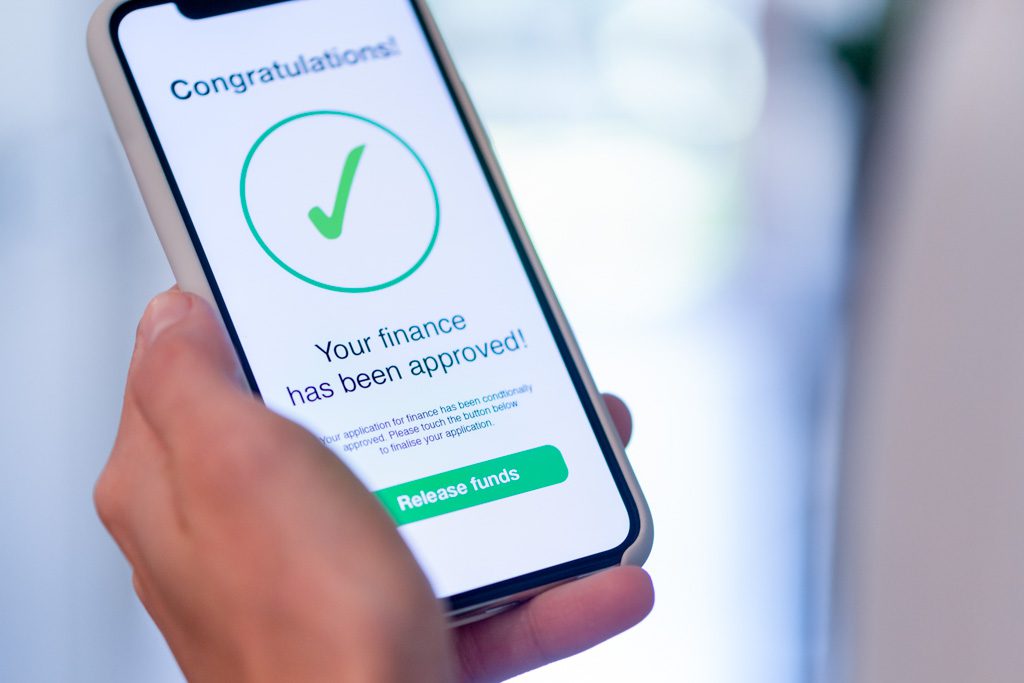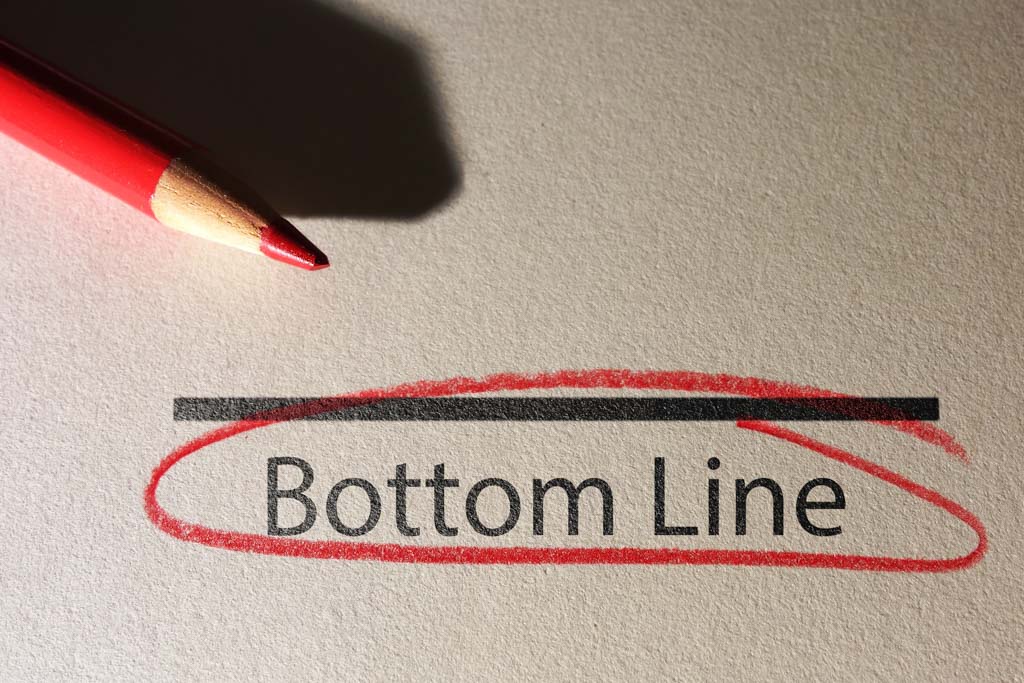Gym valuation: It’s a critical element if you’re looking to buy a gym or finance a gym purchase.
Owning a gym can be rewarding—emotionally and financially. As a fitness entrepreneur, you’ll be helping people stay healthy, and the fitness industry will offer you an opportunity to prosper in a sector with a revenue growth rate of 8.7 percent per year. If you run your business well, you could see a great return on investment (ROI).
However, before you start shopping to buy a gym, you must know the ins and outs of gym valuation so you can make a smart offer or finance a gym purchase. The gym valuation information below is presented for those looking to buy a gym, but it might also help you if you’re looking to sell a gym business.
What Is Gym Valuation and Why Is It Important?
Most gym owners put all their physical and emotional energy into their gyms, and many gyms are owner-operator outfits in which the principals have very strong connections to the brand, the members, the staff and even the equipment. These “labor of love” businesses tend to make owners add value where none exists. So when owners like this decide to sell a gym, their value assessments might be heavily influenced by intangibles that are difficult to quantify.
As a result, you will need the most accurate assessment of the current worth of the seller’s gym business: You must do an objective, emotionless business valuation to measure the fair market value of the gym business. Doing so will ensure you don’t overpay. That’s important because buying a gym is only one way to get into the game: You can also start a gym.
Each path has benefits. Here are the most important:
- Buying a gym allows you to acquire a profitable business and avoid startup work, or it allows you to acquire and fix struggling business so you can generate ROI on your purchase.
- You might be able to start a gym for less money, and the gym might come with fewer nasty knots to untangle.
For a list of pros and cons of buying a gym, read “How to Start a Gym.”
For a book that will tell you exactly how to start a gym, a course and free resources, click here.
If you decide to buy, a gym valuation is critical because it:
- Ensures you don’t overpay.
- Provides hard financial data on the business.
- Establishes your profit potential.
- Determines the likelihood of financing your gym purchase.
- Defines your debt commitment.
- Gives you a basis for recordkeeping.

Factors That Affect Gym Valuation
Without a doubt, intangibles like community standing, branding, enthusiastic clientele and dedicated staff members will influence your final decision to buy a gym. However, the tangible factors are the essential components of your valuation.
The first consideration for assessing the gym’s worth: its profit and profit history. If a gym business isn’t profitable, its value is likely low—though the owner might not agree. In this case, you’ll have to be very cautious in evaluating the business, and if you purchase, you must have a plan to reach profitability quickly.
Microgyms should show a profit, but it’s very common for owner-operators to pay themselves a modest wage and run an unprofitable enterprise. In actuality, these owners have not created a business—they have created a job for themselves. If a business is not profitable, this factor becomes a pivotal issue in the entire gym valuation process.
Next, you should look at key operational metrics, such as net owner benefit (NOB), average revenue per member (ARM), length of engagement/retention (LEG), client count, lifetime value of clients (LTV) and expenses. They’re all tied to profit, so if you dig in you’ll see exact how a business generates profit or where it’s flawed.
This insight will help you determine if a business’s past profits are an indication of future performance or an anomaly. In struggling businesses, you might see metrics that clearly indicate opportunities for you to right the ship quickly.
Resource: “The Business Metrics That Any Gym Owner Should Know”
Other factors involved in your gym valuation are the business’s location (does it own or lease space?), its assets (including but not limited to equipment), its debts, and its contracts (with clients and staff).
Seven Great Gym Valuation Methods
There are many methods of assessing the value of a business. We’ll highlight seven of the most common gym valuation approaches below.

Discounted Cash Flows
The discounted cash flow (DCF) method is used to calculate the value of a gym based on its projected future cash flows.
To perform the DCF valuation, you’ll need a forecast of expected cash flows from your initial investment, a discount rate, and the total cost of your initial investment. You can forecast the expected cash flows by taking last year’s operating profit and assigning a growth rate to it for several years—three to five is common, though some calculations will go up to 10 years.
Most businesses use the weighted average cost of capital (WACC) as the discount rate in DCF gym valuations. A gym’s WACC is the cost of gaining capital or profit. As such, a gym with a high WACC is least likely to make a healthy profit.
For example, suppose the asking price for a gym is $60,000. The owner supplies you with a forecast of expected cash flows based on last year’s free cash flow of $20,000. The annual growth rate is 8 percent, and the WAAC is 25 percent (a higher rate estimate based on the general instability of many gym businesses). With an online DCF calculator, you can calculate this valuation using a four-year period:
| Year | Cash Flow | Discounted Cash Flow |
| 1 | $20,000 | $16,000 |
| 2 | $21,600 | $13,824 |
| 3 | $23,328 | $11,944 |
| 4 | $25,194 | $10,320 |
By adding the discounted cash flows, you will find that this gym’s value is $52,087. By subtracting your $60,000 initial investment, you will see that this gym’s net present value (NPV) is -$7,913. The negative number indicates the investment is likely not worth the risk.
Any numbers you calculate when evaluating a gym become excellent references when you are comparing other gym purchasing opportunities.
The primary setback to using DCF is this method relies on assumptions, and many gym businesses are not stable very stable. To get a solid valuation, the estimates for future cash flows must be as accurate as possible and take into account foreseeable economic, industry and regional conditions. When it comes to gyms, the degree of unpredictability can be high—especially with newer businesses or gyms in which the departing owner performs every single task.
For an editable DCF spreadsheet for gyms from Rigquipment Finance click here or paste this link into your browser: https://twobrainbusiness.com/wp-content/uploads/2020/07/Rigquipment-Finance-DCF-Worksheet-for-TwoBrainBusiness.com_0.xlsx .
The EBITDA Method
EBITDA: earnings before interest, taxes, depreciation and amortization. This is an extremely popular gym valuation method because it is simple and accurate. It works so well because the components of EBITDA reflect the cash flow and market value.
You can calculate a gym’s EBITDA by taking the profit total on the gym’s profit and loss statement and adding back the interest, depreciation and amortization. Once you calculate your EBITDA, you can use multiples to find the approximate purchase price.
How do you determine the correct multiple? According to valentiam.com, “The size of the subject company, its profitability, its growth prospects and the industry within which it operates will have an impact on its EBITDA multiple.”
More profit, more stability and more growth potential equal a higher multiple. For example, a profitable tech company might use an EBITDA multiple of 38.58. An oil-exploration company might use a multiple of 4.6. A small gym with limited profit and slow growth would not earn a high multiple. Consider this chart below, with estimates provided by Sportsclubadvisors.net:
| EBITDA | Multiple | Example |
| 0 to $50,000 | 1.0 to 1.5 x EBITDA | $10,000 x 1.1 = $11,000 |
| $0 to $50,000 | 1.0 to 1.5 x EBITDA | $48,000 x 1.3 = $62,400 |
| $50,000 to $150,000 | 1.5 to 2.0 x EBITDA | $120,000 x 1.7 = $204,000 |
| $150,00 to $250,000 | 2.0 to 2.5 x EBITDA | $170,000 x 2.3 = $391,000 |
| $250,000 – $500,000 | 2.5 to 3.0 x EBITDA | $260,000 x 2.6 = $676,000 |
Microgyms often have low start-up costs, so the examples above beg a question: At what point would it be more cost effective to start a gym instead of buy one?

The Asset Method
The asset gym valuation method takes cash flows and earnings out of the equation. Calculation is quite easy: Just subtract the gym’s liabilities from its assets. For this reason, it is a method that can be used to assess a gym business with negative cash flow.
The asset method also allows you to incorporate goodwill, which involves intangible assets like brand recognition, intellectual property, market share and trade secrets. As you can imagine, it can be hard to determine the value of these elements. Sellers will want to value them higher, of course, and some will overvalue them because of ego, sweat equity and personal attachment to the business. Remember, goodwill assets might actually be worthless if a gym business is in deep trouble—but the seller might not agree with that.
The tangible assets in a gym sale can include the members list, exercise equipment and accessories, franchise rights, account receivables, and lease agreements. The value of each asset is negotiable, though you might agree to use something like the MACRS depreciation method to speed up the process when it comes to certain assets.
The Market Method
Appraising a gym’s value with the market method involves the same steps that a real estate appraiser takes.
First, through research, find recent sales records of comparable gyms in your area. Then account for the differences among the gym businesses. The aggregate adjustments will reveal the approximate market value of the gym in question.
Although real estate and market method gym valuations are similar, the significant difference is that real estate transactions are public record and private gym sales are usually not. So it might be very challenging to find comparable gym sales in your area without the help of a professional with access to secured databases like DealStats and BIZCOMPS.
However, any stats you can find might prove to be very helpful because they can take a lot of arguing and guesswork out of the negotiations. In the end, any asset is only worth what someone will actually pay for it.
For example, if a seller is claiming his unprofitable business is worth $100,000 and you have information that shows three very similar businesses sold for $30,000-$40,000, you have either significant negotiating power or the means to break off negotiations completely and avoid overpaying.
Seller’s Discretionary Earnings Method
The seller’s discretionary earnings (SDE) method is an income-based approach to gym valuation that is particularly applicable to owner-operated gyms. It’s similar to the EBITDA method described above, but this method involves adding owner’s compensation and owner’s perks to EBITDA.
Many gym owners have low profits but derive net owner benefit (NOB) from the business, including salary, profit distributions, vehicle allowances, cell-phone plans, coffee and so on. Those benefits can be important to a coach who wants to be an owner-operator, too.
But be cautious: There’s a difference between buying yourself a job and buying yourself a business, and you must know exactly what you’re buying. If the owner-operated business you are buying has no profit, you are only buying a job for yourself. You can certainly turn that enterprise into a true business, but you will need a solid plan to do so or you’ll be coaching and cleaning and doing the accounting yourself forever.
To reach a valuation with this method, you must multiply the seller discretionary cash flow (SDCF) by a multiplier based on industry, economic environment and other financial factors.
A seller’s discretionary cash flow is the gym’s pre-tax earnings before:
- Non-cash expenses.
- Owner’s salary.
- Interest expense or income.
- One-time payments.
- Non-business-related revenue and liabilities.
Step 1. Calculate SDCF by finding the gym’s pre-tax earnings from the income statement and:
| Operation | Variables |
| Add | Non-operating expenses |
| Subtract | Non-operating income |
| Add | One-time expense |
| Subtract | Non-recurring income |
| Add | Amortization expenses and depreciation |
| Add | Interest expense |
| Subtract | Interest income |
| Add | One owner’s total salary |
| Adjust | Compensation of other stakeholders to market value |
Step 2. Based on the gym’s performance, the multiplier can range from 0 to 3 or more, with the average being 1.5. As you can imagine, the multiplier is always up for debate.
For example, if your total for the seller’s discretionary earnings of an above-average performing gym is $60,000, you might use a multiplier of two, resulting in a valuation of $120,000.
In another version of the same scenario, you might determine that SDE of $60,000 is too low to warrant a sale price of six figures. Paying $120,000 for a business with low SDE might prevent you from generating a return or even properly compensating yourself for the work required to run the business. In that case, you might argue for a multiple of 1.2 or so, which would result in a sale price of $72,000. For more examples on multiples, click here.

Book Value Valuation Method
If you want to buy an asset-rich and profit-poor gym, the book value method might be an option. This method is also very simple.
All you need is the gym’s balance sheet to calculate the business’ value at a given time. By subtracting the total liabilities from the total assets on the balance sheet, you can determine the “book value” of the gym business.
Rough Estimate Valuation Method
If you need to make a rough estimate in a hurry, you can use a formula Two-Brain Business founder Chris Cooper lays out in the guide “How to Sell a Gym” (“How to Buy a Gym” can be found by clicking the same link).
This is a suitable method for screening potential gym buyers. Here are the steps to calculating a rough sale price:
- Start with last year’s profit, including wages and dividends received.
- Multiply the profit by three years (zero for unprofitable gyms).
- Multiply by your retention rate (for example, 80 percent year-over-year retention would mean a multiplier of 0.8).
- Add the equipment’s real value (30 percent of the original purchase price, 10 percent for equipment three years old or older).
For example, a microgym owner received $70,000 from the gym last year, and the profit was $6,000. The gym’s retention rate is 70 percent (not very good), and the 2-year-old equipment is worth $7,000. On your cell phone calculator, the simple equation would be ($76,000 x 3 x 0.7) + $7,000 = $166,600.
Remember, this isn’t meant to be a shortcut around due diligence. It’s just a very quick method you can use to determine if you even want to do additional research.

Using Gym Valuations When Seeking Financing
When you set out to buy a fitness business, an accurate gym valuation helps you determine whether a gym is a worthy investment.
Along the same lines, having a clear valuation in the financial analysis section of your business plan can show lenders and investors how the gym’s cash flows and asset returns will affect their investment.
You have many options to finance your gym purchase if you decide to proceed. After you’ve completed your valuation for the gym and determined a purchase is a solid investment, you can examine these options.

Rigquipment Finance
If you plan to buy a CrossFit affiliate, functional fitness facility or similar microgym, you might consider a specialty lender with clear ties to the fitness and gym industry. For example, Rigquipment Finance’s founders were coaches and athletes, so they have personal knowledge of the obstacles you’ll face when seeking capital to buy a gym.
Rigquipment is a direct lender that handles the entire lending process in house—no broker involved. Plus, if you need to finance exercise equipment or flooring, Rigquipment has connections with prominent vendors, including Rogue.
Financing a Gym Purchase With a Bank Loan
If you choose to use a bank loan to purchase a gym, your valuation will be vital in securing the funds. To gain approval, you will need to present a business plan including the valuation of your prospective gym, corroborating documents and evidence of financial solvency.
A bank loan is one of the most secure ways to finance gym purchases. However, the interest rates can be extremely high.

Small Business Administration Loans
This body is set up to help entrepreneurs follow their dreams. The SBA can help business owners obtain funding from $500 to $5.5 million by connecting them with lenders.
The SBA lists the following benefits of its loans:
- Competitive terms: SBA-guaranteed loans generally have rates and fees that are comparable to non-guaranteed loans.
- Counseling and education: Some loans come with continued support to help you start and run your business.
- Unique benefits: Lower down payments, flexible overhead requirements, and no collateral needed for some loans.
Interested entrepreneurs must meet eligibility requirements, and possession of a “sound business purpose” is usually one of them. That means you must have a business plan and financial projections—and your gym valuation will figure prominently in both.
Relatives and Personal Savings
In most cases, financing your gym business with your savings or an investment from relatives can be advantageous due to increased flexibility and favorable loan structures. But that doesn’t mean you should cut corners and throw money around without research. It’s still important to create a business plan with a valuation because it gives everyone a clear understanding of the gym’s value and its potential to deliver the desired rate of return. That will ensure you don’t cause family stress or blow your savings on a bad investment.
Remember, your gym purchase has to generate a greater return than your savings would if you kept the money invested.
For example, suppose you are considering taking $140,000 out of an IRA account yielding a 10 percent return (compounded annually) with fees of $1,000 over three years. If your three-year DCF gym valuation shows the present value of your gym purchase is $199,907 at a 10 percent growth rate with a 5 percent discount rate from free cash flows starting at $20,000, you can compare that to the $185,340 (after fees) IRA return you would get during the same period. As a result, it might be reasonable to use your savings to invest in a gym with cash flows of $18,000 and higher.

Financing a Gym Purchase With a Business Partner
A partnership is a viable way to finance a gym purchase: Two or more people pool money and resources together to share the work and spread out the risk. This option is better when partners bring in complementary skills and abilities.
For instance, one partner might have a business administration background while the other might have people and marketing skills. Or maybe one partner is silent and the other handles operations and takes a salary in addition to a share of profit.
Whatever your arrangement, the rigors and stress of running a business can strain even the best relationship. Regardless of how rosy the picture is before the deal is signed, you should create a partnership agreement with conflict-settlement terms and an exit strategy.
And remember this: Multiple owners will divide the profit, just as they divided the risk.
Crowdfunding to Finance a Gym Purchase
Crowdfunding provides a unique and exciting way to finance a gym purchase. Instead of appealing to an institutionalized lender representing millions of investors, you can directly take your pitch to the prospective investors. While this sort of approach was unheard of years ago, it’s more common now.
Many online crowdfunding platforms like Kickstarter and Indiegogo allow you to make your pitch to anyone who might be interested in sharing in your gym business success. The crowdfunding platform allows you to provide investors with enough information about you and your venture to satisfy their due-diligence requirements.
Depending on how you structure your offer, you can provide an ROI for investors in many non-traditional ways. For example, a video game creator might send each investor a free advance copy. Or you might offer equity ownership in return for cash. In some cases, people simply donate money rather than invest it.
Be careful when setting up your offer. In the fitness game, you might be tempted to offer lifetime memberships in return for a cash infusion, but that can turn out to be a very bad play if your gym’s classes are packed with people who won’t every contribute to your cash flow. And then there are the percentages taken by the crowdfunding platform: They can range from 5 to 12 percent.

The Bottom Line
Nothing guarantees the success of a venture, but taking the steps to properly value a business will give you incredible insight.
Through your work, you might discover that a gym purchase is risky and your cash will generate a better return right where it is. Or you might discover that a gym business has a huge potential upside that more than balances the risk. Similarly, research will help you avoid overpaying, and it might even help you acquire a promising business at a fantastic price.
All insight aside, a solid valuation is an essential part of making a deal, and you’ll need it when you try to secure financing.
Our advice: Put in the effort so you can make the best decision. And if you need help, Two-Brain mentors work with aspiring and established gym owners. You can book a call to find out more here.
To get the free guides “How to Buy a Gym” and “How to Sell a Gym,” click here.
About the Author: John Burson successfully ran a personal training business for over 20 years, and he has written volumes of published articles on business entrepreneurship, finance and the fitness industry.

